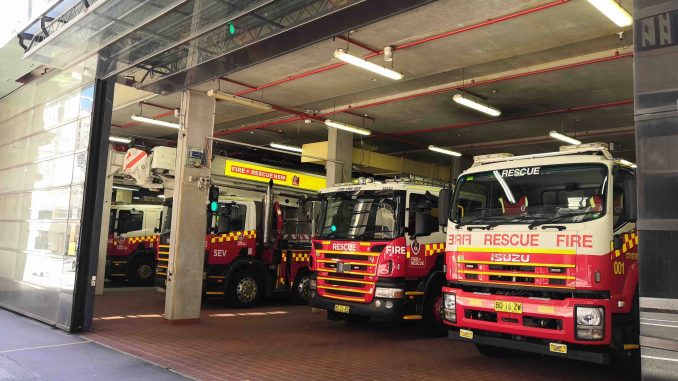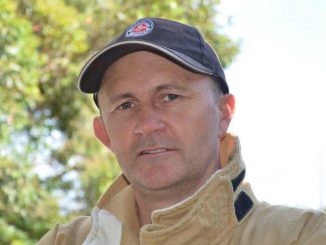
Recruitment for firefighters at Fire and Rescue NSW is the largest NSW Government recruitment process in operation. This results in a competitive, multi-stage process aimed at identifying the very best candidates for the job. Applications close this Sunday 9th August 2020.
Fire and Rescue NSW are looking for candidates with a broad range of skills to meet the challenging and rewarding nature of the job, both for Permanent (full-time) and Retained (on-call) Firefighter positions.
Being a firefighter is no ordinary job. The work is varied, challenging and rewarding. The firefighter role entails a range of different functions, including:
- Fire prevention and investigation
- Community education and activities related to safety and prevention, including fire education for children (conducted in pre-schools, kindergartens, primary schools) and rescue education for teenagers (conducted in high schools); working with diverse communities to raise awareness, educate and help minimise the environmental impact of fire; and providing assistance to the elderly, e.g. installation of smoke alarms in homes
- Recovery and management of hazardous, toxic and flammable materials
- Recovery after storm and flood
- Responding to rescue calls throughout the State, assisting people involved in domestic, industrial and transport incidents, including road accidents
- Providing basic first aid until an accredited provider arrives, such as the NSW Ambulance
- Carrying out building inspections to prepare risk assessments and pre-incident plans
- Maintaining good health and physical fitness
- Undertaking ongoing development, and maintenance of skills and knowledge through regular training and study
- Cleaning/maintenance of equipment and the fire station. This includes core housekeeping duties such as cleaning the bathroom, kitchen, vacuuming etc.
- Firefighters often operate in stressful situations, particularly when people are injured or threatened with injury. When attending an incident, firefighters may be required to comfort victims or advise the public to stay clear of the area. Firefighting is physically and psychologically demanding, especially during major emergencies, and involves quick thinking, team work and endurance.
- Generally, permanent firefighters work in a fire station as part of a platoon supervised by a Station Commander. Platoons contain anywhere between 3 and 12 firefighters of various ranks, depending on the size and nature of the fire station. Each fire station is part of a zone containing between 9 and 27 fire stations and headed by a Zone Commander. These Zones are then grouped in areas (north, south, east and west) headed by an Area Commander.
RECRUITMENT
The firefighter recruitment campaign takes up to five months to complete and consists of three main sections:
STEP 1:
- Submit your application online
- Online assessments
Applications opened on 24th July and close on Sunday 9th August. Find out more about Step 1.
STEP 2:
- Physical Aptitude Test (PAT)
Being a part of the Fire and Rescue NSW (FRNSW) team is physically demanding and being ready to help anyone, anywhere, anytime is critical to responding to any emergency necessary.
The FRNSW Physical Aptitude Test, or PAT, consists of tasks which simulate the work carried out by firefighters at emergency incidents. The PAT is used to assess if a candidate’s level of fitness is suitable for a career as a firefighter. The PAT is a highly validated assessment designed specifically to identify and recruit individuals who are physiologically capable of tolerating the work-related demands of firefighting.
Find out more about Step 2.
STEP 3:
- Merit based stages
The merit based recruitment stages consist of a review of two targeted questions that applicants have previously answered, online verification, an interview and a group activity and of course employment checks. Find out more about Step 3.
STEP 4:
- Medical Assessment
Conditions of firefighting are unique and physically and psychologically demanding. Fire and Rescue NSW has a duty of care to individual firefighters, their colleagues and the public and to this end, firefighter candidates are medically assessed to ensure:
- they can carry out essential tasks without significantly increasing their personal risk of injury or illness, and
- they are unlikely to place others at risk, and
- they meet the medical standards for heavy vehicle operations.
Find out more about the medical assessment for Step 4.
The stages of recruitment are explored in more detail in the 2020 Candidate Information Pack, including how candidates will be selected to progress forward:
- Candidates must be successful at each recruitment stage to be considered eligible to progress to the next stage.
- Progress updates will be notified by email.
- FRNSW is committed to ensuring that security, integrity and privacy is not compromised at any stage of the recruitment process and will carry out systematic ID checks and online test verification.
For more information on Fire and Rescue NSW head to their website www.fire.nsw.gov.au




